Scalping is one of the most popular short-term trading strategies. Both sophisticated and retail traders often use this to get low but consistent profits throughout the day. However, scalping requires high discipline as it depends on fast executions and keen analysis. In this article, we will discuss all about scalping, including how it works and how to implement it.
Article Summary
- Scalping Strategy focuses on taking small profits quickly, utilizing high leverage to maximize potential profit but with a greater risk.
- Types of Scalping include range-bound and breakout techniques. Both require an understanding of support/resistance levels and quick execution.
- Risks of Scalping include psychological stress, high transaction costs, slippage, and the significant risks from using leverage, which could result in position liquidation.
- Scalping Tips involve using small time frames like 5 minutes or 15 minutes, selecting assets with high liquidity, strict risk management, and using leverage with a minimum risk-to-reward ratio of 1:2.
What is A Scalping Strategy?
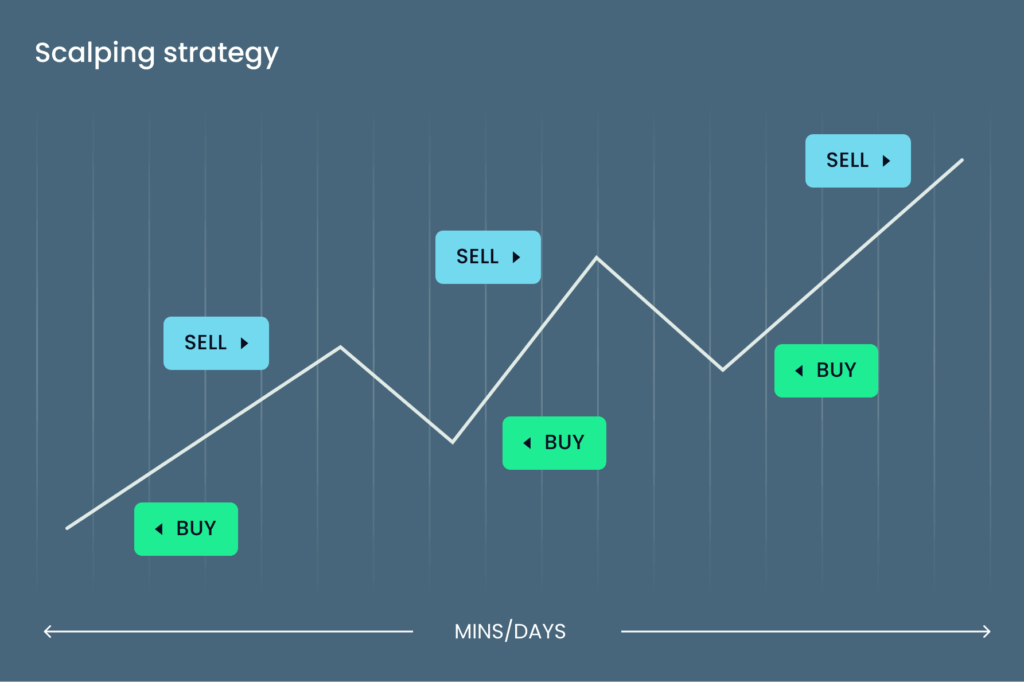
Scalping is one of the most popular trading strategies among active traders, especially in the futures market. This strategy focuses on taking small profits quickly, capitalizing on micro price movements that occur in minutes.
By using high leverage like 25x or 50x, traders can maximize the profit potential from small price movements, but it also increases the risk. For example, with 50x leverage, a 0.2% price move can generate a 10% profit from the allocated margin for that position.
However, the same applies to losses. A price movement in the opposite direction by 0.2% could result in a 10% loss. Therefore, the key to scalping is tight risk management and quick execution.
Types of Scalping Strategies
1. Range-Bound Scalping
This strategy works best when the market moves sideways or within a clear channel. The goal is to buy at support (lower boundary) and sell at resistance (upper boundary). This technique is ideally executed in smaller timeframes like 5 minutes, 10 minutes, or 15 minutes.
How to determine the Range? Traders identify a “box” or price range where an asset tends to bounce back and forth. They will place buy orders near the lower boundary (support) and sell orders near the upper boundary (resistance).
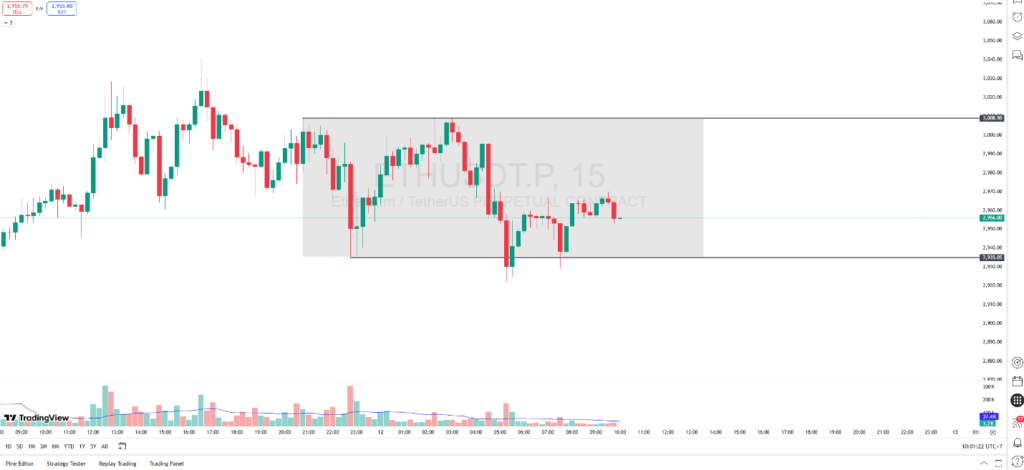
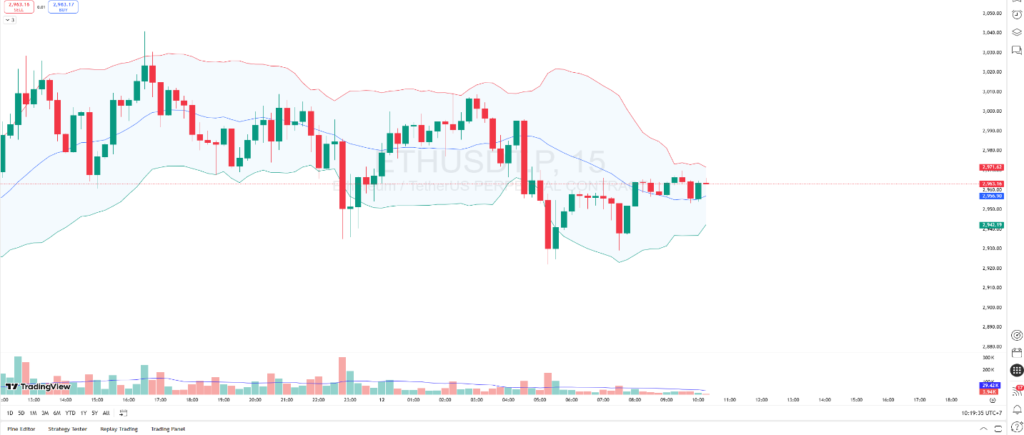
How to implement range-bound scalping:
- Identify Support and Resistance levels on a 15-minute timeframe and mark those levels to form a range. Traders can use price action or indicators like Bollinger Bands.
- Look for Long (Buy) or Short (Sell) entry opportunities on a smaller timeframe like 5 minutes for more precise, quick trades.
- Long Entry (Buy) when the price touches resistance and is rejected with the formation of a bearish candlestick.
- Short Entry (Sell) when the price touches support and is rejected with the formation of a bullish candlestick.
- The Take Profit target should align with a Risk to Reward ratio of at least 1:2. For example, if the distance between the entry price and stop loss is 0.5%, the ideal take-profit target would be 1%.
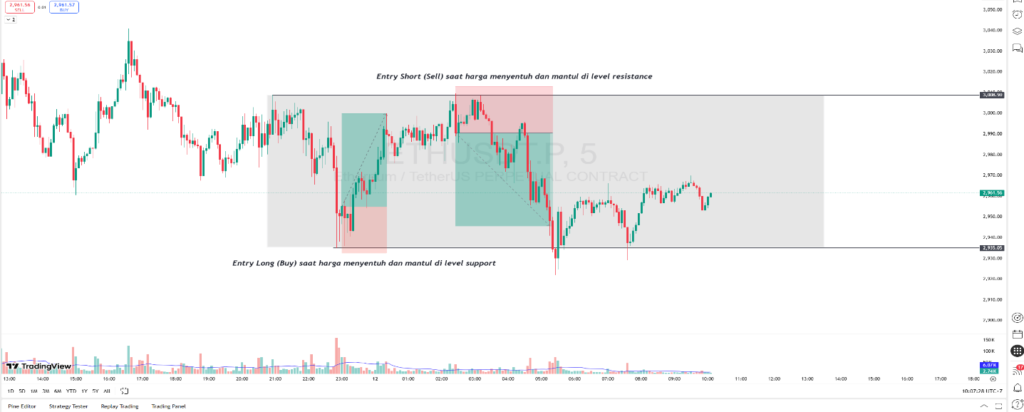
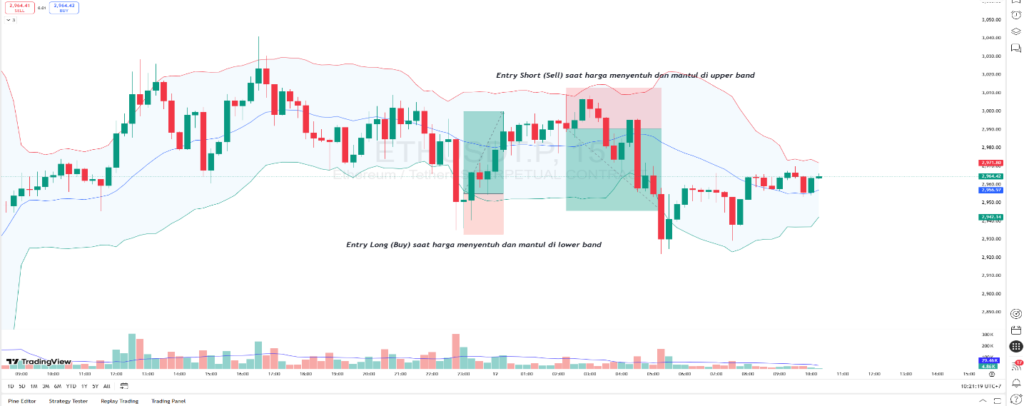
2. Breakout Scalping
This strategy is the opposite of range-bound. A scalper waits for the price to break through significant support or resistance levels with the expectation that the movement will continue in the direction of the breakout with strong momentum.
How to identify when to apply this technique:
Traders identify consolidation patterns like flat channels. When the price breaks out of this pattern with increased volume, they immediately enter a position in the direction of the breakout. Note that price doesn’t always break through support/resistance on the first attempt. The more often support/resistance is tested, the higher the likelihood of a breakout.
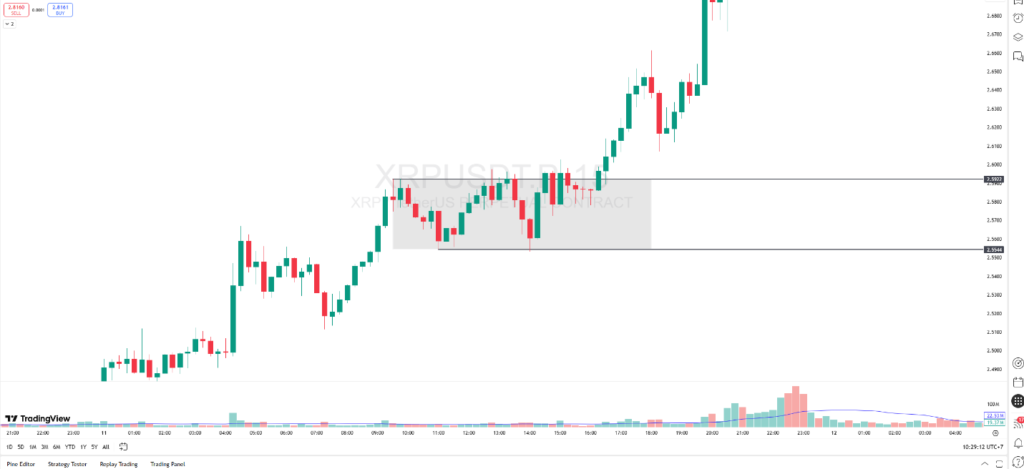
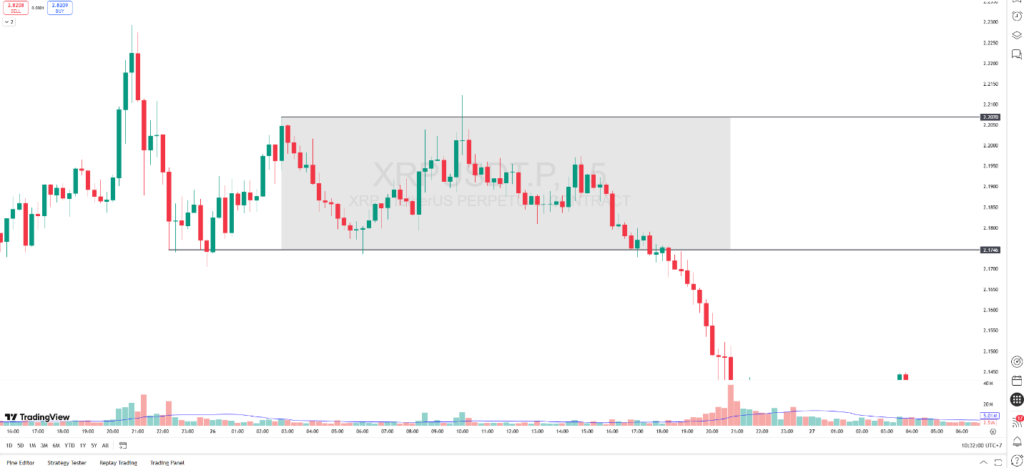
How to implement breakout scalping:
- Identify Support and Resistance levels on a 15-minute timeframe and mark these levels to form a range. Look for opportunities on a smaller timeframe like 5 minutes for precise, quick trades.
- Long Entry (Buy) occurs when the price breaks above resistance with increased volume and a confirmation of a full bullish candlestick.
- Short Entry (Sell) occurs when the price breaks below support with increased volume and a confirmation of a full bearish candlestick.
- Similar to the previous technique, the Take Profit target should align with a minimum Risk to Reward ratio of 1:2 to minimize losses.
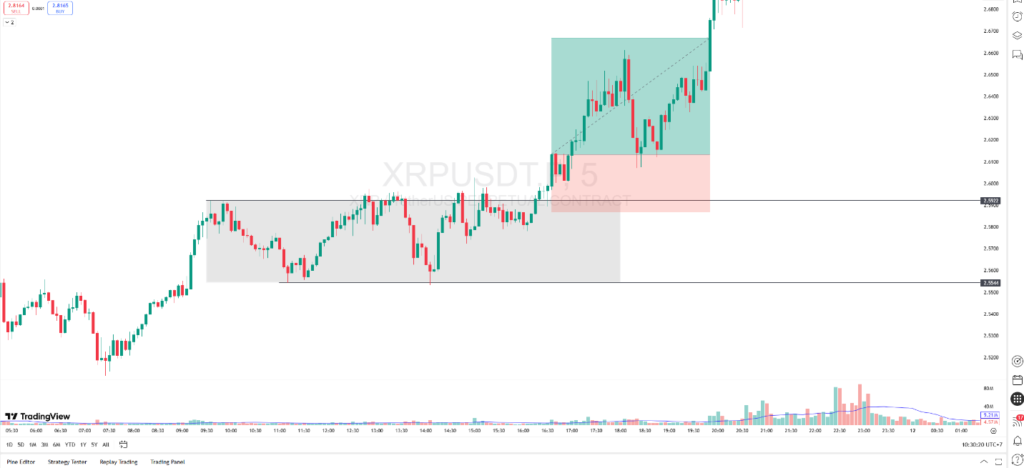

Risks of Scalping
Despite its appeal, scalping carries very high risks, especially with high leverage. It takes discipline and extreme focus to be consistently profitable with scalping.
- Psychological Stress: Scalping demands full concentration, fast reactions, and exceptional emotional control. Mental burnout is a real risk.
- Transaction Costs: Due to the very high frequency of trading, commission fees and spreads (the difference between buy and sell prices) can accumulate quickly and erode profits.
- Slippage: In a rapidly moving market, the execution price of an order can differ from the intended price. This small difference, called slippage, can turn a profitable position into a loss.
- Leverage Risks: With 50x leverage, a 2% adverse price movement will liquidate the entire position’s margin. Pay close attention to the margin you use for each position.
Advantages and Disadvantages of Scalping
| Advantages | Disadvantages |
|---|---|
| Fast and consistent profit potential | Requires high focus and mental endurance |
| Suitable for sideways markets | High risk with large leverage |
| Many opportunities within a day | Transaction fees pile up quickly |
| No need for fundamental analysis | Difficult to execute in iliquid market conditions |
Tips for Running A Scalping Strategy
- Use Small Time Frames: Focus on 5-minute (5m) and 15-minute (15m) charts as references for important levels.
- Choose Assets with High Liquidity: Use assets with large volumes and small spreads, such as major coins like BTC, ETH, and SOL. Avoid assets with low trading volume, as slippage can be high.
- Measure Risk Management: Keep your Stop Loss tight, a maximum of 0.3%-0.5% from entry. Use a Risk to Reward ratio of at least 1:1, and ideally 1:2. You can use 3-5% of your capital per position when starting.
- Use Leverage Wisely: Leverage 25x–50x increases the chances of profit, but it also raises the risk of loss. Open positions below these numbers while considering your available margin.
Conclusion
The scalping strategy is a highly popular method in the futures market that focuses on small, rapid profits. Using high leverage, like 25x or 50x, allows traders to maximize potential profits from small price movements, but it also increases the risk. Scalping comes with high risks, especially concerning leverage, transaction fees, and psychological stress. It’s essential to have strict risk management and fast execution to make this strategy work effectively.
How to Use Pintu Futures on Pintu Pro Web
You can buy cryptocurrencies such as BTC, SOL, and many others directly through Pintu Pro Web. On Pintu Pro web, you can trade both Futures and spot seamlessly.
How to trade Crypto Futures on Pintu Pro Web:
- Open https://pintu.co.id/en.
- Click the button Launch Pro on Desktop in the upper center.
- Sign up or log in to Pintu Pro Web.
- Open the Futures section.
- Trade BTC and other cryptocurrencies.
Pintu is also compatible with popular digital wallets such as MetaMask, making your transactions even more convenient. Download the Pintu app on the Play Store or App Store nd start trading securely. Pintu is regulated and supervised by OJK and CFX.
Looking to learn more about crypto? Explore Pintu Academy, where we publish new educational articles every week!
All articles from Pintu Academy are intended for educational purposes only and do not constitute financial advice.
References
- Emily Norris, “Scalping Strategies: Mastering Quick Profits in the Market”, Investopedia, accessed on July 9, 2025.
- “Scalping Strategy – How it Works, Types, Tips, & Pros and Cons”, Groww, accessed on July 10, 2025.
- SK Arora, “What is scalping in crypto, and how does scalp trading work?”, CoinTelegraph, accessed on July 11, 2025.
